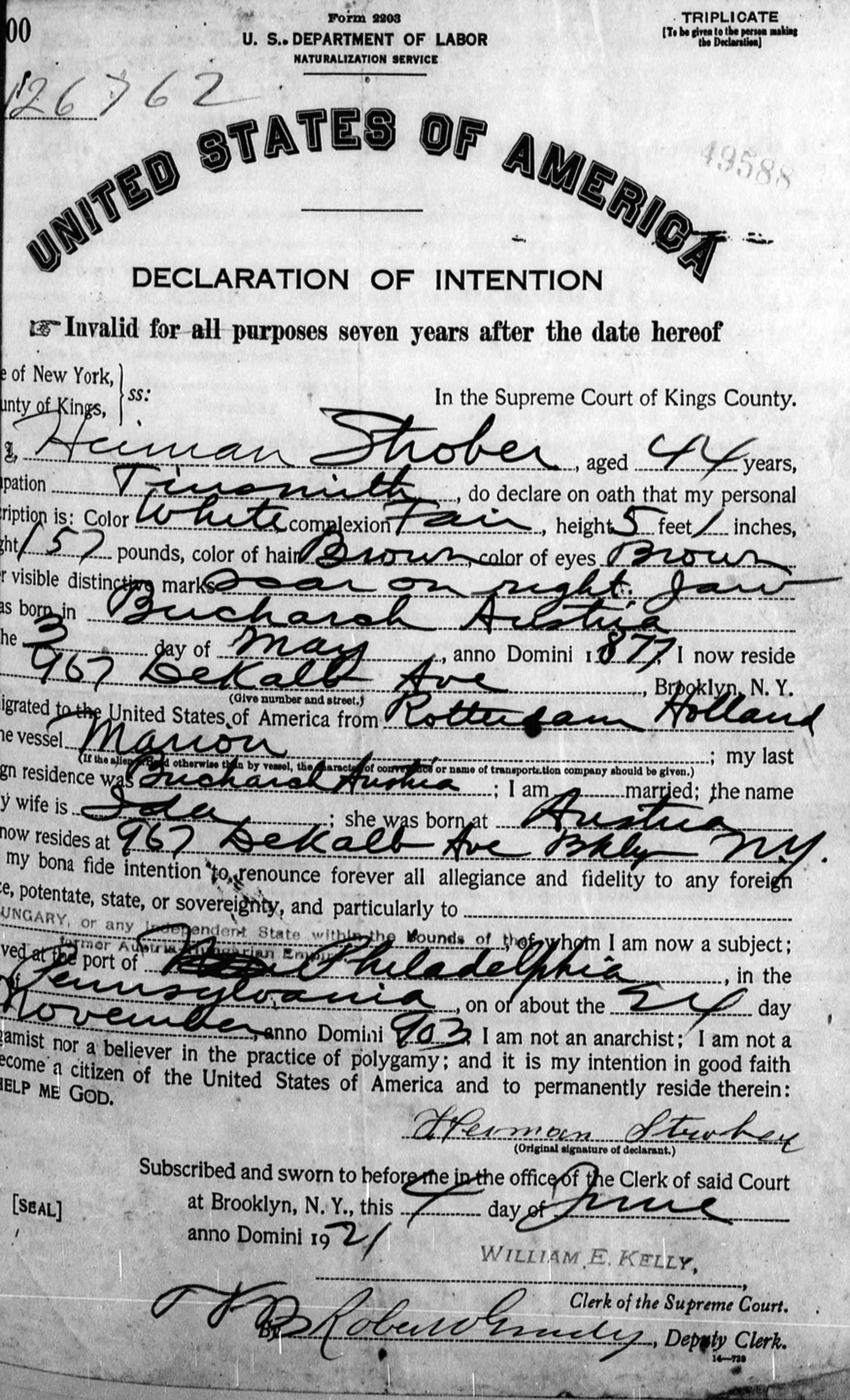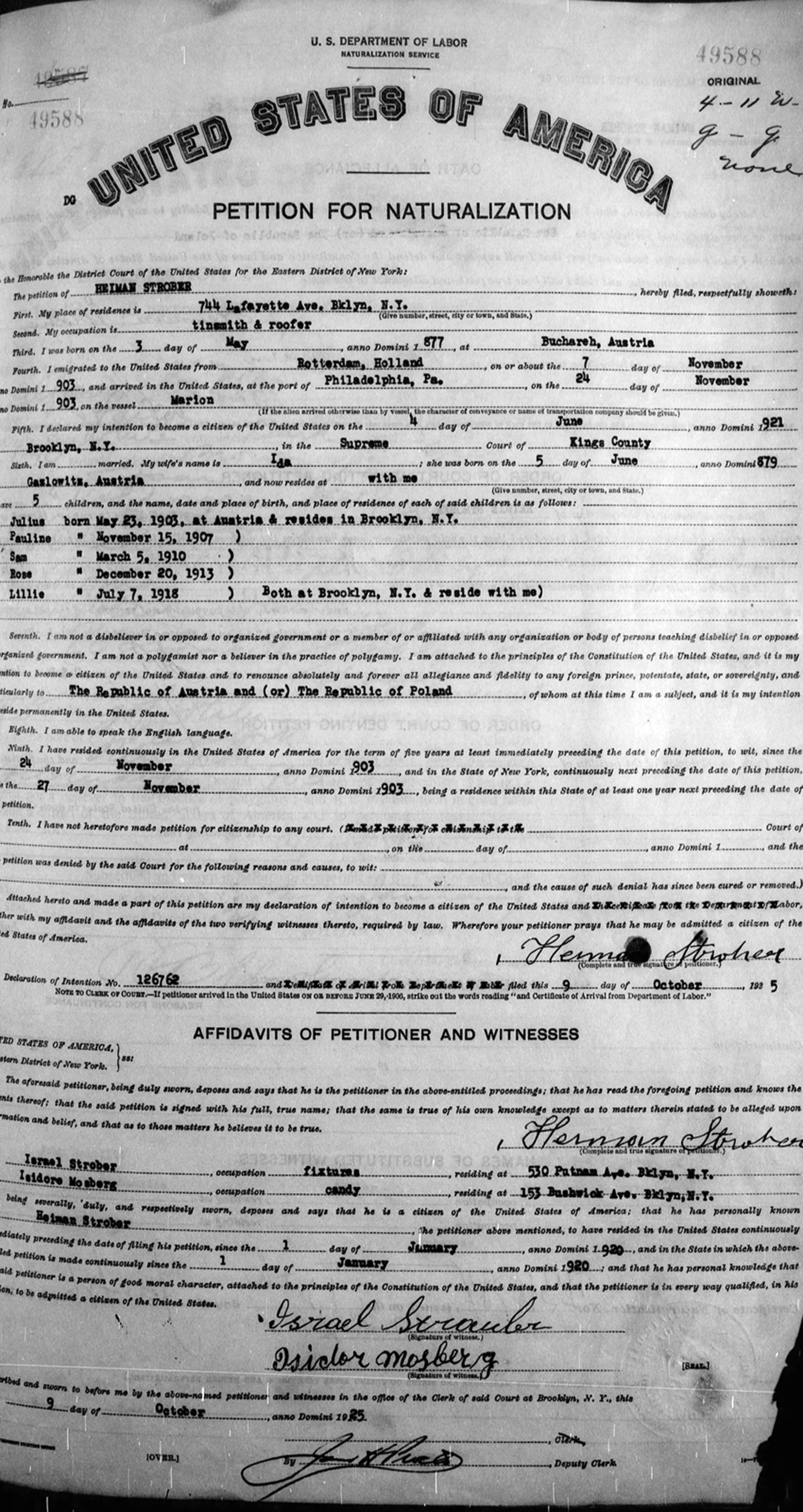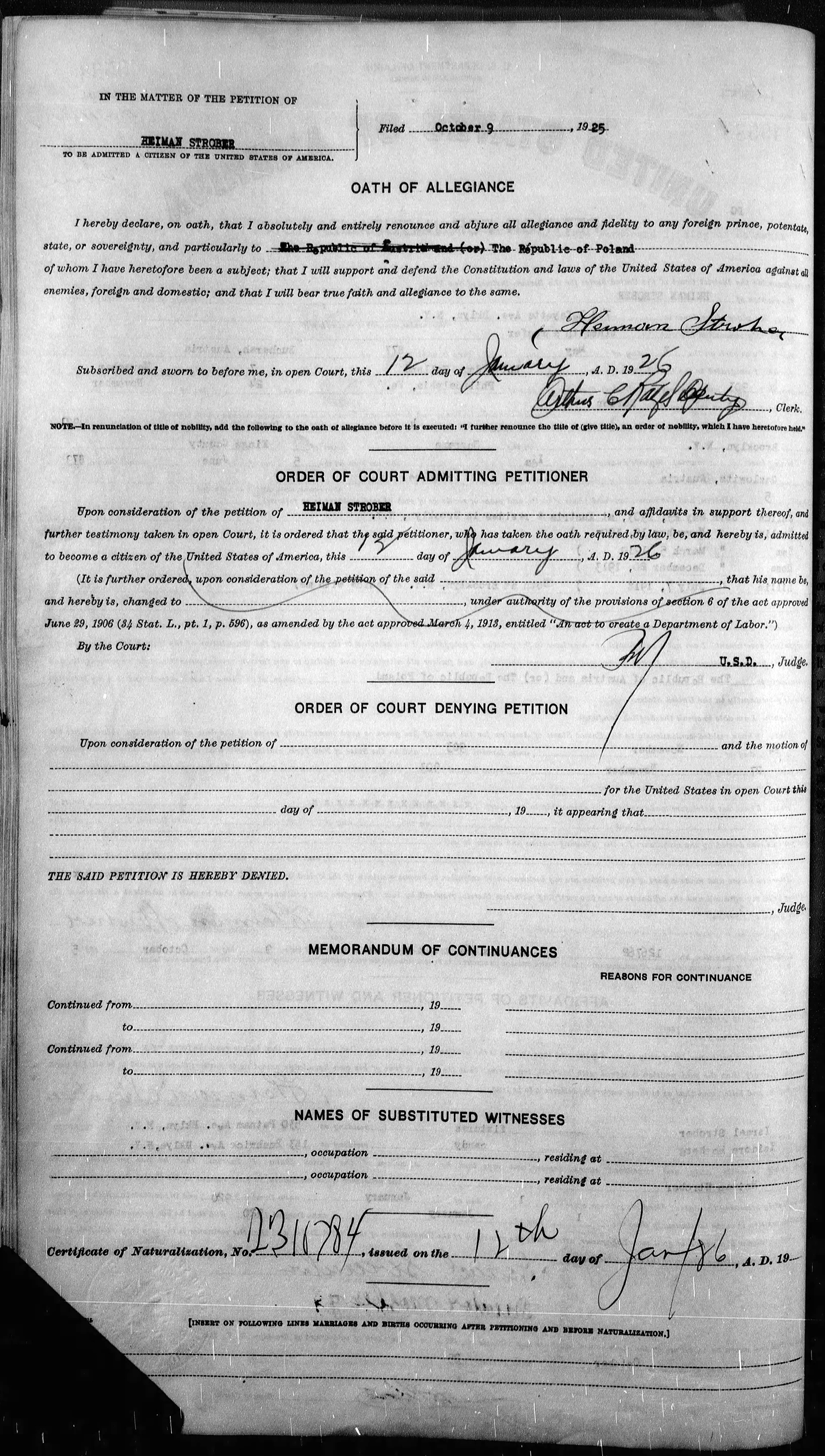This is a primer in the value of primary documents in genealogy research. And it’s also a lesson in sticking to it.
Chaim “Heiman” Strober was a son of Schmeel Hirsch Strober, and a grandson of Yoinus Folic Strober. That makes him the nephew of my great-grandmother Surah Henya (Schkolnik) Strober. And except for one tiny picture from the 1940s, that’s all I knew about him.
But my cousin Kristie Weiland, who threw herself headlong into genealogy research some years ago, helped us to learn a lot more about him. Kristie went digging in the (largely unindexed) archives of the New York courts some years ago and came up with three documents that tell us much more about this ancestor. All three documents involve his path to American citizenship in the 1920s.
 The first of the documents was filed in New York Supreme Court (which had jurisdiction over immigration matters at that time) on June 4, 1921. It is called a Declaration of Intention, and it began Heiman’s journey from a resident alien to citizenship.
The first of the documents was filed in New York Supreme Court (which had jurisdiction over immigration matters at that time) on June 4, 1921. It is called a Declaration of Intention, and it began Heiman’s journey from a resident alien to citizenship.
Why a 44-year-old man who had lived in Brooklyn for almost two decades would decide in 1921 that he needed to suddenly become a citizen isn’t clear. Those were years when the Red scare swept America. The previous year, in a series of actions undertaken by U.S. Attorney General A. Mitchell Palmer, more than 500 immigrants were rounded up and tagged for deportation because of suspected Communist, Socialist, or anarchist political views. Note that the Declaration of Intention form requires the applicant to affirm that he or she is not an anarchist, bigamist or polygamist, and to swear it before God. Perhaps people who had immigrated to the U.S., as Heiman had, were worried their immigration status was in jeopardy unless they became citizens.
A little over four years later, on October 9, 1925, Heiman was back in court in Brooklyn to get his petition for naturalization. By then, control of immigration had shifted from State Court to Federal Court, and typewriters had become the standard way to file government forms. Heiman listed the names and birthdates of his five children, and we’re able to see the signatures of his witnesses, his uncle, Israel Strauber, and his brother in law, Isidor Mosberg. Israel listed his occupation as “fixtures” and Isidor listed his as “candy.” Heiman also indicated that he left Europe from Rotterdam, Holland in 1903 aboard the vessel Marion, had arrived in Philadelphia two weeks later, and had come to New York City three days after arriving. He listed his occupation as tinsmith and roofer.
He listed his wife as Ida (though she was known in the family by her Yiddish name Hudel) and gave her birthdate as June 5, 1879. Her gave her birthplace as something the clerk heard as “Gazlowitz, Austria” but which is almost certainly Jazlowiec (pronounced YAHZ’-lu-vitz), the same shtetl so many other members of this part of the family are from. He listed his own birthdate as May 3, 1877 and his place of birth as “Bucharch, Austria,” which is almost certainly Buczacz (pronounced boo-CHATCH’ in Polish, Ukrainian, and German, and bu-CHOOCH’ in Yiddish), which was the equivalent of the county seat.
Three months later, Heiman’s Petition for Naturalization was granted, he took an Oath of Allegiance to the United States, and became a U. S. citizen. He had 20 grandchildren, scores of great-grandchildren, and the lineage has now reached into the next generation, great-great-grandchildren.



Comments on this entry are closed.
Wow… this is amazing…!